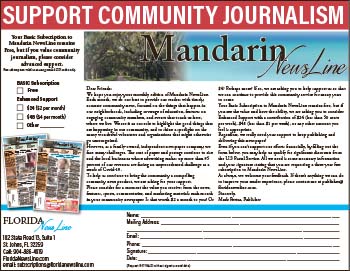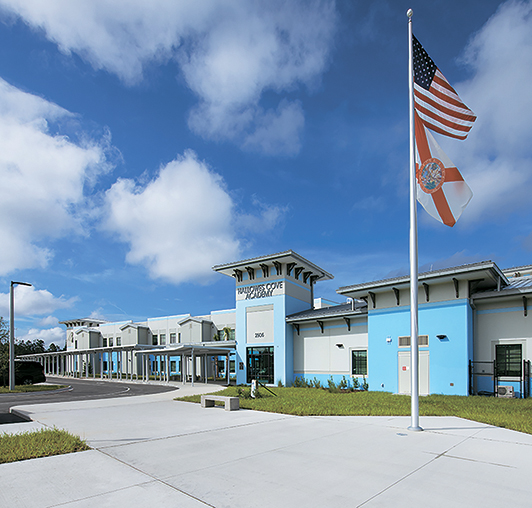By NewsLine Staff
mail@floridanewsline.com
I came across the term “ecosystem services” in several training sessions last year, and it seemed a bit pretentious. The lectures were, after all, by leaders in their fields at The University of Florida so it’s not a term in everyday use. But it just prompts us to consider what we want from our yards and gardens, while considering the needs of the creatures that share our spaces.
When it comes to the pretty neighbors — the birds and butterflies — that many gardeners hope to attract, it seems easy enough. Give them food, water, and shelter, and they will come. But I’ve learned that it’s not that straightforward. For example, while birds are nesting and rearing their young, they need high protein insects to fatten their brood, so a feeder offering seed isn’t enough.
Now we might begin to consider the ecosystem services of our plants. Are they attractive to our local insects, buzzing with bees and other pollinators? Some flowering plants might not have the necessary characteristics to support our insect life. While I love the perfume of the tea olive near my drive, I haven’t seen insects homing in on its tiny flowers. Maybe they lack nectar and pollen that is easily accessible? Maybe the flowers simply don’t produce enough? Maybe there is something in its genes that makes it clear that it’s an exotic introduction, not a native plant? It certainly doesn’t attract any egg-laying insects; there are never any caterpillars browsing its leaves. No bird food here.
Modern cultivars of some of our classic flowers are hybridized and bred for characteristics like vigor, larger flowers, and a longer blooming season. But sometimes that’s at the expense of what a flower is supposed to do — and that’s produce seed after being fertilized by sometimes specialized insects. With those changes, insects may no longer be able to access the food, if it’s even still available.
And of course, we sometimes resort to dousing a plant in insecticides if it has a severe infestation of “pests,” which we could otherwise consider “bird food,” especially if those pests are caterpillars. Maybe that plant’s ecosystem service is simply to attract food for the birds?
So ecosystem services, while sounding like jargon, is a term that encourages us to evaluate what role our plants play in our environment. My old-timey tea olive (Osmanthus fragrans) isn’t very useful, except to give me pleasure with its sublime perfume. It isn’t even dense enough for nesting birds, although they use it to perch in their journeys around my yard. But the native crossvine (Bignonia capreolata) winding its way through a rangy old beautyberry (Callicarpa americana) provides food for bumblebees who happily nose their way into the trumpet-shaped flowers. And the tangled vines provide a perfect place for northern cardinals to nest.
We can also evaluate ecosystem services when it comes to our pleasure. Like my tea olive, maybe some of your choices will benefit only you. After all, a yard that doesn’t give you pleasure won’t be satisfying to live or work in. But a yard that is devoid of other creatures doesn’t work for me. Even if a yard is picture perfect, without the unexpected encounter — that black racer slipping out of sight under the shrimp plant, the now rare sight of lovebugs mating on our Simpson’s stopper (Myrcianthes fragrans) — where is the mystery? Where is the fun?
There will be attractive plants to tempt me, but if they hold no value for our wildlife I shall think twice before choosing them over native plants.







